Results 11,091 to 11,100 of 12091
Thread: Anandtech News
-
04-13-21, 10:53 AM #11091
Anandtech: Microsoft Springs A Surface Launch: Surface Laptop 4 Announced With Custom
Microsoft tends to update their Surface lineup on an irregular schedule, not necessarily following the updated CPUs that are generally announced on a mostly annual cadence. Today Microsoft is announcing an updated Surface Laptop, dubbed the Surface Laptop 4, and brings the hardware up to date, somewhat at least. Also, with the explosion in video conferencing as a result of the Covid-19 global pandemic, the company is also announcing a slew of accessories to improve the Microsoft Teams experience.
Surface Laptop 4: Intel Tiger Lake and Custom AMD Processors
Microsoft’s update schedule often means their products linger in the market with specifications that are no longer current. Perhaps no product has felt that more than the Microsoft Surface Laptop 3, especially the AMD version, which launched in late 2019. Based on AMD’s Picasso platform at the time, the AMD Ryzen Surface Edition processor suffered from poor battery life – an issue which AMD resolved with the launch of their Ryzen 4000 series “Renoir” processors just a few months later.
Today, Microsoft is rectifying this, but not going quite as far as you would expect for a device launching in April 2021. Once again, Microsoft will be launching both Intel and AMD powered versions of the Surface Laptop 4, and again, the AMD models will feature a custom Ryzen processor. However, despite AMD releasing their Ryzen 5000 series “Cezanne” lineup, the Surface Laptop 4 will feature the older Renoir platform. As disappointing as this is, Renoir was a very capable platform, with great performance, and great battery life. Perhaps the Surface Laptop 4 refresh was supposed to come in late 2020, but was delayed by Covid, but regardless, even with the Ryzen 4000 series powering it, the Surface Laptop 4 should be a big improvement over the Surface Laptop 3.
Perhaps disappointingly for AMD fans, customers who opt for the Intel-based Surface Laptop 4 will not have to suffer such indignities. Surface Laptop 4 will ship with the latest Intel Tiger Lake platform, which brings slightly updated CPU cores, and much more powerful Intel Xe graphics, on Intel’s 10 nm process.Microsoft Surface Laptop 4 13.5-Inch 15-Inch Processor Intel Core i5-1035G7
Intel Core i5-1145G7
Intel Core i7-1185G7
AMD Ryzen 5 4680U
AMD Ryzen 7 4980UIntel Core i7-1185G7
AMD Ryzen 7 4980UMemory 8GB/16GB/32GB LPDDR4X-3733MHz Intel: 8GB/16GB/32GB LPDDR4X-3733MHz
AMD: 8GB/16GB/32GB DDR4-2400MHzGraphics Intel: Intel Iris Xe Grahics
AMD: AMD Ryzen Microsoft Surface Edition Radeon GraphicsDisplay 13.5" 2256x1504 3:2 PixelSense
Touch and Pen support
Individually calibrated panels15" 2496x1664 3:2 PixelSense
Touch and Pen support
Individually calibrated panelsStorage 256 GB, 512 GB PCIe NVMe
Removable DriveNetworking Wi-Fi 6 802.11ax
Bluetooth 5.0Audio Omnisonic Speakers
Dolby Audio 9Battery Up to 19 hours on AMD Ryzen 5
Up to 17 hours on Intel Core i5Up to 17.5 hours on AMD Ryzen 5
Up to 16.5 hours on Intel Core i5Right Side Surface Connect Port Left Side USB Type-A
USB Type-C
Headset JackDimensions 308 x 223 x 14.51 mm (12.1 x 8.8 x 0.57 inches) 339.5 x 244 x 14.69 mm (13.4 x 9.6 x 0.57 inches) Weight Fabric: 1.26kg
Metal: 1.29kg1.54kg Camera Front: 720p Camera and Windows Hello support
Dual far-field Studio MicsExtras Surface Pen and Dial (sold separately)
TPM 2.0Pricing Starting at $999 USD Starting at $1099 USD
Also good news is that Microsoft has drastically expanded the lineup in terms of choice, with both the 13.5-inch, and the 15-inch models both available with AMD or Intel options, whereas the AMD version was only available in the 15-inch for Surface Laptop 3, and the Intel Ice Lake was only available as the “Business” edition. For the Surface Laptop 4, there is plenty of choice.
Additional choices are now available in terms of color too, with Microsoft adding an Ice Blue option to the existing Platinum, Matte Black, and Sandstone options. One of the most unique aspects of the original Surface Laptop was the Alcantara keyboard deck, and Microsoft has kept that as an option for the 13.5-inch model in either Platinum or Ice Blue.
Microsoft is claiming up to 19 hours of battery life on the Surface Laptop 4, in 13.5-inch guise and with the AMD Ryzen processor. This is a significant upgrade over the outgoing model, and comes alongside much better performance. Memory is 8 GB to 32 GB, and storage is 256 GB to 1 TB. Microsoft used to be guilty of offering specifications that were too low for even a base model, but 8 GB / 256 GB is a reasonable low-end configuration.
Microsoft pushed back on USB Type-C, and the company still is pushing back on Thunderbolt, even on the Intel-based devices. Thunderbolt 4 brings a lot of standardization, and would have been nice to see, but sadly, the company refuses to support it. One area where they can be commended though is that they are expanding their removable SSD support to the Surface Laptop 4, allowing easier expandability in the future. The drives are, as far as we can tell, still PCIe 3.0 NVMe drives, even though the Intel Tiger Lake model would support PCIe 4.0 storage. We’ll try to get clarification on if the slot supports it or not though.
The Surface Laptop has always offered great build quality, along with the fantastic PixelSense display in the now ubiquitous Surface 3:2 aspect ratio. While there are no major changes to the chassis, the updated internals, coupled with the light weight and good display, bring the Surface Laptop back into the equation.
The Surface Laptop 4 is available for pre-order, starting at $999 for the 13.5-inch, and $1099 for the 15-inch models.
Source: Microsoft
More...
-
04-14-21, 09:19 AM #11092
Anandtech: MSI Drops A Bling Bling Motherboard: the MEG Z590 Ace Gold Edition
On the back of Intel's 11th generation Rocket Lake processor release last month, MSI has dropped a new Z590 motherboard which certainly raises an eyebrow towards aesthetics. The new Z590 Ace Gold Edition is a gold-inspired take of the regular MEG Z590 Ace motherboard, with all of the same premium features such as PCIe 4.0 support, 2.5 GbE, Wi-Fi 6E, and dual Thunderbolt 4 Type-C on the rear panel.
Built around its Enthusiast Gaming series, the MEG Z590 Ace Gold Edition injects a lot of flair and vibrance that the regular MEG Z590 Ace doesn't have. While aesthetics comes down to a matter of individual opinion, the MSI MEG Z590 Gold Ace Gold Edition is decked out in gold and brushed aluminum finishing, including the rear panel cover, power delivery heatsinks, PCIe slot armor, M.2 heatsinks, and the chipset heatsink.
Despite the refreshed and extravagant aesthetic, it includes the exact same feature and controller set as the regular MSI MEG Z590 Ace, which includes two full-length PCIe 4.0 slots that can operate at x16 and x8/x8, a third full-length PCIe 3.0 x4 slot, and two PCIe 3.0 x1 slots. There are four memory slots that can accommodate up to DDR4-5600 memory, with a maximum capacity of 128 GB, and includes one PCIe 4.0 x4 M.2 slot, three PCIe 3.0 x4/SATA M.2 slots, and six SATA ports which is plenty of storage options. Providing power to the CPU is the same 16-phase power delivery with premium 90 A power stages as the regular Z590 Ace and dual 8-pin 12 V ATX CPU power inputs.
The rear panel also comes with plenty of features and includes a pre-attached gold and aluminum-colored rear panel cover (Ian: I can barely read those labels! What if you're colorblind!?). For connectivity, the MSI MEG Z590 Ace Gold Edition has dual Thunderbolt 4 Type-C with two mini-DisplayPort video inputs, two USB 3.2 G2 Type-A, four USB 3.2 G1 Type-A, and two USB 2.0 ports. The board also uses a Realtek ALC4082 HD audio codec and ESS Sabre 9018Q2C DAC combination, which powers five 3.5 mm audio jacks and S/PDIF optical output, as well as a BIOS flashback and Clear CMOS button pairing. On the networking side of things, MSI is using an Intel I225-V 2.5 GbE controller and Intel's latest AX210 Wi-Fi 6E CNVi.
At present, we don't know when the MSI MEG Z590 Ace Gold Edition is going to hit retail shelves, nor do we have any pricing. The regular MSI MEG Z590 Ace has an MSRP of $500, so we expect the gold variant to cost a little more.
We also have the MSI MEG Z590 Ace (regular version) in for review, which we will publish in due time.
Source: MSI
Gallery: MSI Unveils Gold Standard For Z590, MEG Z590 Ace Gold Edition_thumb.jpg)
_thumb.jpg)
_575px_thumb.jpg)
_thumb.jpg)
_575px_thumb.jpg)
_thumb.jpg)
Related Reading- The Intel Z590 Motherboard Overview: 50+ Motherboards Detailed
- Intel Rocket Lake (14nm) Review: Core i9-11900K, Core i7-11700K, and Core i5-11600K
- ASRock Z590 Taichi Review: An Intel Motherboard with Moving Parts (and Thunderbolt 4)
- The ASRock Z590 OC Formula Motherboard: By and For Overclockers
- The MSI Z590 Godlike, Comparing it to the Z490 Godlike
More...
-
04-15-21, 12:55 PM #11093
Anandtech: Intel’s Full Enterprise Portfolio: An Interview with VP of Xeon, Lisa Spel
With the launch of Intel’s Third Generation Xeon Scalable platform based on 10nm Ice Lake processors, Intel has upgraded a part of the company that makes the BIG money. For the last few years Intel has been pivoting from a CPU-centric company to a Data-centric company, leveraging the fact that more and more of its product lines are built towards the datacenter mindset. With the launch of the new server platform in this past week, Intel is gearing itself up for an enterprise stack built on 10nm, PCIe 4.0, and cryptographic acceleration.
In this interview, we ask about Intel’s offerings, the scope of new accelerative features, what really matters to Intel’s customers, and how Intel is approaching its roadmap given the fast follow on from Ice Lake to Sapphire Rapids.
More...
-
04-15-21, 12:55 PM #11094
Anandtech: TSMC Q1 2021 Process Node Revenue: More 7nm, No More 20nm
This week TSMC has disclosed its full quarterly financial results for Q1 2021. In those results the company often explains where the revenue demand is for its technologies, and the financial split the demand brings. This number is not correlated to wafer production (although TSMC provides an overall number too), given that smaller process nodes have a per-wafer premium, but it does indicate where the demand is in the market right now. As perhaps to be expected, 7nm takes top billing, however a couple of interesting numbers come out of the data.
More...
-
04-15-21, 07:56 PM #11095
Anandtech: Sales of Fab Tools Surge to Over $71 Billion in 2020
SEMI, an organization representing chipmakers and producers of semiconductor production tools, published this week that sales of wafer processing equipment has surged to an all-time record of $71.19 billion for 2020. In the lead-up to the current chip crunch, equipment sales to South Korea and China noticeably spiked, with fabs in the former buying 61% more gear than in 2019, while China has risen to become the largest fab tool customer of all of the nations.
Overall, sales of fab equipment surged 19% from $59.75 billion in 2019 to $71.19 billion in 2020, according to SEMI. The substantial increase was driven by several factors. First and foremost, the world now consumes more chips than ever, and that consumption will only grow over time. Secondly, the competition between TSMC and Samsung Semiconductor (which has Foundry and Memory divisions) is escalating and both companies are spending more money on semiconductor equipment. Thirdly, next-generation lithography equipment (both DUV and EUV) is getting more expensive, so are other tools used in clean rooms. And finally, China is intensifying its domestic semiconductor efforts amid the trade war with the U.S.
Chinese companies increased their spending on wafer processing equipment by 39% year-over-year in 2020 to $18.72 billion, an all-time record for the country. Various companies, both domestic and foreign, are ramping up production of logic and memory chips in China, so the surge was something expected.Annual Billings by Region in $U.S. Billions with Year-Over-Year Change Rates Region 2020 2019 Change China 18.72 13.45 39% Taiwan 17.15 17.12 0.2% South Korea 16.08 9.97 61% Japan 7.58 6.27 21% North America 6.53 8.15 -20% Europe 2.64 2.28 16% ROW 2.48 2.52 -1% Total 71.19 59.75 19%
Taiwanese manufacturers bought semiconductor tools worth $17.15 billion last year, which was flat with 2019. Now that UMC (which is the world's third largest contract maker of chips) is focused on specialty and mature processes, it no longer has to buy leading-edge equipment. By contrast, TSMC's purchases of new tools offset declines at UMC, but on the country level shipments of semi tools were flat year-over-year. Meanwhile, this is going to change in 2021 as TSMC plans to radically increase its spending on new fabs up to $28 billion in 2020 and intends to invest $100 billion in new plants and R&D over the next three years.
South Korean companies increased their annual spending on semiconductor equipment to $16.08 billion last year, a whopping 61% year-over-year jump. Samsung Semiconductor, which has foundry services for logic, DRAM, and NAND flash memory, has been setting records with its CapEx budgets in the recent years. Its rival SK Hynix has also been increasing procurement of wafer processing equipment. As a result, in 2020 South Korean companies spent about the same amount of money on fab tools as Japan, North America, and Europe combined.
And though Japan is no longer a microelectronics mecca, but Japanese companies still spent $7.58 billion on fab tools last year, up 21% from 2019. A significant share of that expenditure likely belongs to Kioxia and Western Digital that constantly buy new equipment for their 3D NAND operations, and there are a number of other companies in Japan that produce more specialized semiconductors.
Meanwhile, tool purchases by American fabs actually dropped by 20% versus the previous year, sinking to $6.53 billion for 2020. The US is still the runaway leader for chip design, so the drop serves to widen the gap between how much is designed in the country versus how little is fabbed there. Overall it looks like the tables are going to turn in the coming years as Intel, Samsung Foundry, and TSMC begin to equip their new fabs in the USA; but for now, fab tool shipments are down significantly.
Finally, European fabs increased their purchases of new tools by 16% last year, totaling $2.64 billion invested in new equipment. As Intel brings its 7 nm fabrication process to Ireland in the coming quarters, the company will increase its spending in Europe, so fab tool sales there should see at least a temporary spike in the future.
In fact, tool sales are likely to spike everywhere for 2021 and beyond. While SEMI doesn't directly publish any outlooks for future sales, it's clear that the ongoing chip crunch has set the stage for a surge of additional equipment sales, as fabs are overwhelmed with orders despite already operating at full capacity. So, already fully booked for quarters to come, the need for new fab tools will only be increasing.
Source: SEMI
More...
-
04-16-21, 11:08 AM #11096
Anandtech: Biostar Announces B550T-Silver Mini-ITX Motherboard For AMD's Ryzen 5000 F
Biostar has unveiled its latest mini-ITX motherboard for the AMD B550 chipset, the B550T-Silver, which is designed for use with AMD's Ryzen 5000 and Ryzen 3000 processors. The small-sized board combines a simple silver and black aesthetic with decent features including PCIe 4.0 support, Wi-Fi 6, 2.5 GbE networking, and one PCIe 4.0 x4 M.2 slot.
With both NVIDIA and AMD moving quickly away from multi-graphics card setups to single card powerhouses, the mini-ITX form factor has become as potent as as it's ever been for gaming systems. Biostar's latest board, in turn, ticks a lot of boxes for users looking for a reasonably priced mini-ITX motherboard that can harness the power of AMD's Zen 3 processors to create a potent and pocket-sized gaming system/media center with the AMD's cheaper Ryzen chips.
From what we've seen, no X570 or B550 boards currently list support for the latest Ryzen 5000G APUs, which we expect to change once AMD rolls them out onto the wider market.
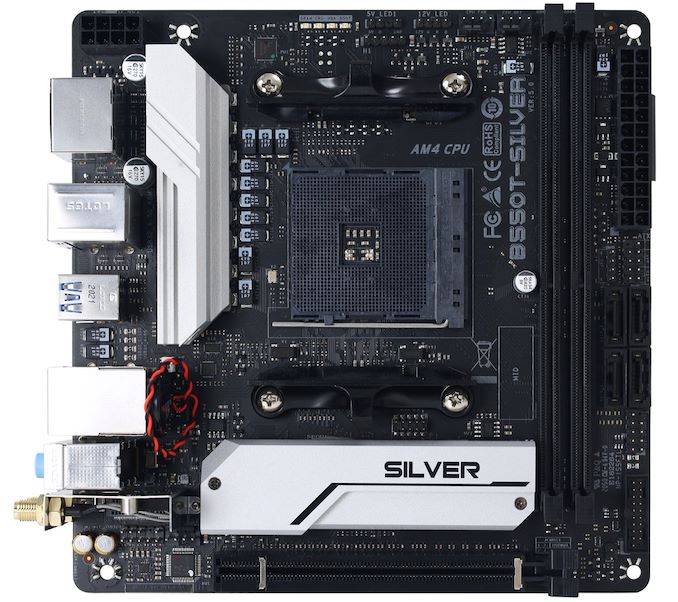
The Biostar B550T-Silver combines a basic and elegant black and silver color scheme, with plenty of features to be benefited from. There's one full-length PCIe 4.0 x16 slot, with a single PCIe 4.0 x4 M.2 slot and four straight-angled SATA ports, including support for RAID 0, 1, and 10 arrays. On the right-hand side of the board are two memory slots, which can support 64 GB of RAM at speeds up to DDR4-4933. Biostar isn't openly advertising the power delivery system, but we can see it uses one 8-pin 12 V ATX input to provide power to the CPU.
Biostar includes one USB 3.2 G2 Type-C, one USB 3.2 G2 Type-A, and four USB 3.2 G1 Type-A ports on the rear panel. There's an unspecified Wi-Fi 6 interface for wireless networking, and a Realtek RTL8125B 2.5 GbE controller. The board's integrated audio consists of three 3.5 mm audio jacks powered by a Realtek ALC897 HD audio codec. Users looking to build a mini-ITX media system can benefit from the integrated graphics on the Ryzen 4000 APUs through one HDMI 2.1 and a single DisplayPort video output pairing. Finishing off the rear panel is a PS/2 combo keyboard and mouse port.
At the time of writing, we don't currently have a price for the Biostar B550T-Silver mini-ITX motherboard or when it is expected to hit retail. However, we do expect it to be reasonably priced compared directly to some of the other mini-ITX B550 models.
Gallery: Biostar Announces B550T-Silver Mini-ITX Motherboard For Rocket Lake


Source: Biostar
Related Reading- The AMD B550 Motherboard Overview: ASUS, GIGABYTE, MSI, ASRock, and Others
- AMD Ryzen 5000G APUs: OEM Only, For Now, Full Release Later This Year
- First AMD B550 With Thunderbolt 4: The ASUS ProArt B550-Creator
- The ASRock Rack B550D4-4L, a B550 Motherboard with BMC
- AMD Zen 3 Ryzen Deep Dive Review: 5950X, 5900X, 5800X, and 5600X Tested
More...
-
04-19-21, 07:37 AM #11097
Anandtech: AI Funding Spree: +$300m for Groq, +$676m for SambaNova
The growth of AI has seen a resurgence in venture capital funding for silicon start-ups. Designing AI silicon for machine learning, both for training and inference, has become hot property in Silicon Valley, especially as machine learning compute and memory requirements are coalesced into tangible targets for this silicon to go after. A number of these companies are already shipping high performance processors to customers, and are looking for further funding to help support customers, expand the customer base, and develop next generation products until profitability happens, or the company is acquired. The two latest funding rounds for AI silicon were announced in this past week.
More...
-
04-20-21, 06:55 PM #11098
Anandtech: Cerebras Unveils Wafer Scale Engine Two (WSE2): 2.6 Trillion Transistors,
The last few years has seen a glut of processors enter the market with the sole purpose of accelerating artificial intelligence and machine learning workloads. Due to the different types of machine learning algorithms possible, these processors are often focused on a few key areas, but one thing limits them all – how big you can make the processor. Two years ago Cerebras unveiled a revolution in silicon design: a processor as big as your head, using as much area on a 12-inch wafer as a rectangular design would allow, built on 16nm, focused on both AI as well as HPC workloads. Today the company is launching its second generation product, built on TSMC 7nm, with more than double the cores and more than double of everything.
More...
-
04-21-21, 12:26 PM #11099
Anandtech: MLPerf Inference v1.0: 2000 Suite Results, New Power Measurements
There has been a strong desire for a series of industry standard machine learning benchmarks, akin to the SPEC benchmarks for CPUs, in order to compare relative solutions. Over the past two years, MLCommons, an open engineering consortium, have been discussing and disclosing its MLPerf benchmarks for training and inference, with key consortium members releasing benchmark numbers as the series of tests gets refined. Today we see the full launch of MLPerf Inference v1.0, along with ~2000 results into the database. Alongside this launch, a new MLPerf Power Measurement technique to provide additional metadata on these test results is also being disclosed.
More...
-
04-21-21, 12:26 PM #11100
Anandtech: Seagate Unveils FireCuda-Branded External HDD Solutions
Seagate has been marketing their gaming-focused storage products under the FireCuda brand over the last few years. With a focus on performance, these products have typically been flash-based and/or cater to the high-bandwidth peripherals market using Thunderbolt. Today, the company is introducing a couple of new hard-drive-based products focusing on capacity and the aspect that gamers seem to love (based on market demand) - RGB lighting.
The FireCuda Gaming Hard Drive is a 2.5" bus-powered external HDD complete with RGB lighting (customizable using Seagate's Toolkit software as well as Razer Chroma). It is available in capacities of 1TB, 2TB, and 5TB with MSRPs of $80, $110, and $180 respectively. Street prices are lower, as can be seen from product listings online.
Similar to Seagate's current bus-powered external HDD lineup, the new FireCuda Gaming Hard Drive also sports a USB 3.2 Gen 1 (5 Gbps) Micro-B interface. While we haven't received official confirmation yet, it is likely that the new drives are also SMR-based like the Seagate Backup Plus line. One of the interesting value additions is the inclusion of Rescue Data Recovery services for three years in addition to the one year warranty.
The FireCuda Gaming Hub will become available in the market a little later - This is a full-fledged 3.5" HDD in a RGB enclosure. It has to be externally powered, which also allows the product to carry front-facing USB-C and USB-A ports (both 3.2 Gen 1 - 5Gbps) and act as a hub. The Rescue DRS value-addition is applicable to this product also. The product will be available in two capacity points - 8TB for $220, and 16TB for $400. The latter SKU is interesting from the viewpoint of the internal drive - this will probably be the first product to carry Seagate's consumer-focused 16TB HDD, as they do not have a BarraCuda 16TB in the retail market currently.
Gallery: Seagate Unveils FireCuda-Branded External HDD Solutions


More...
Thread Information
Users Browsing this Thread
There are currently 19 users browsing this thread. (0 members and 19 guests)






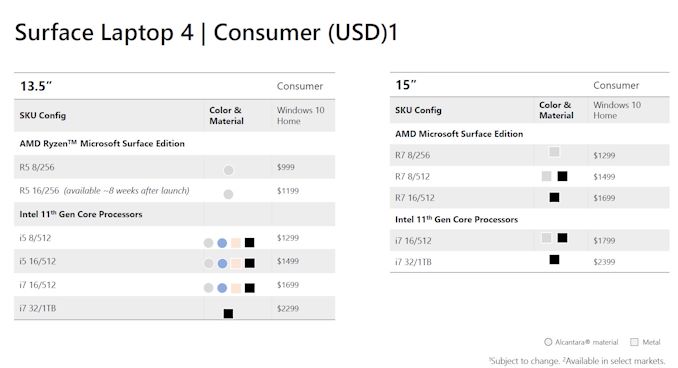
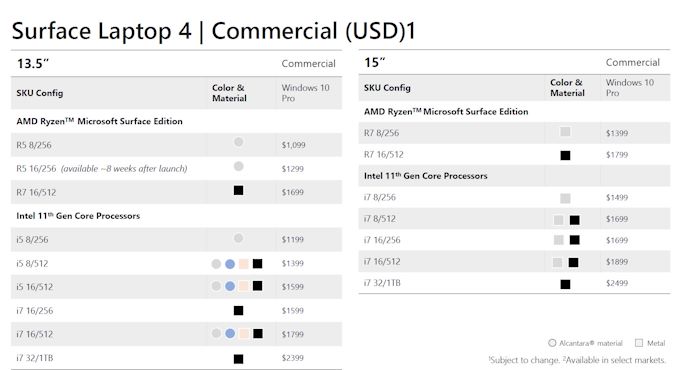
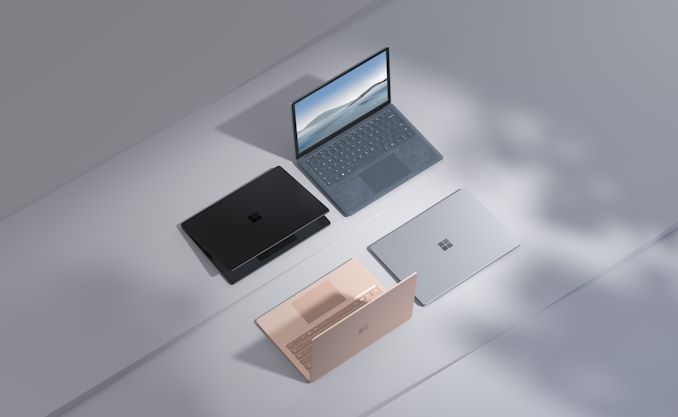

 Quote
Quote_575px.jpg)
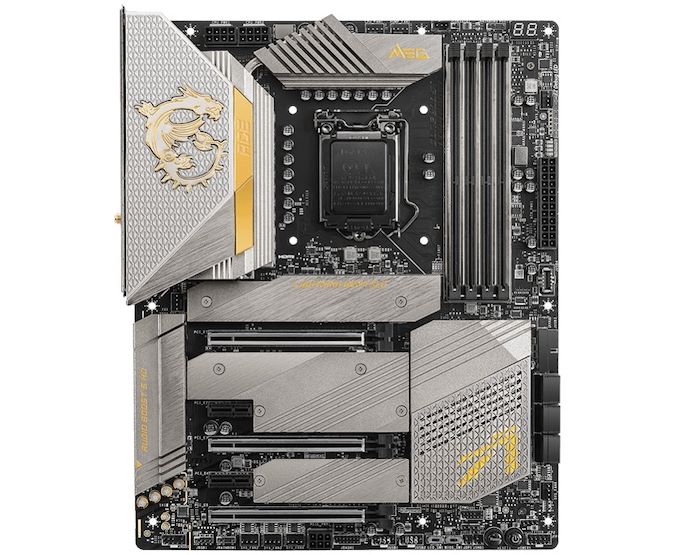

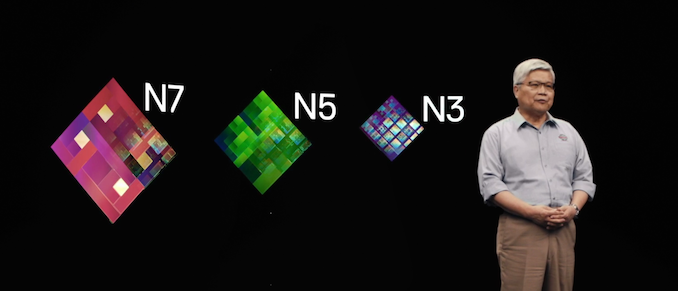
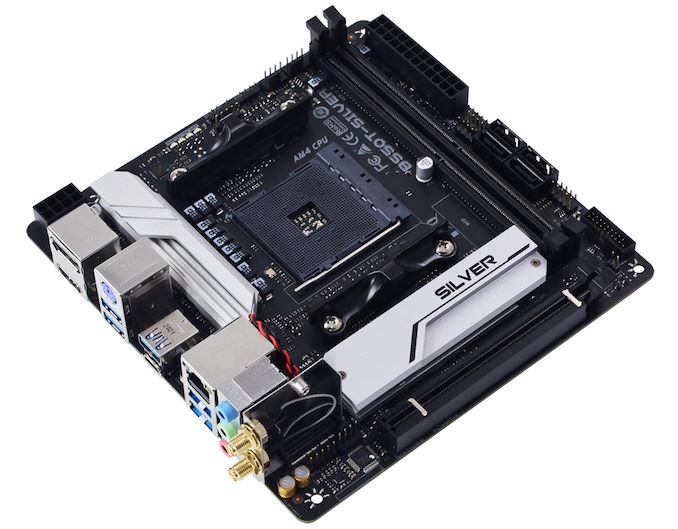

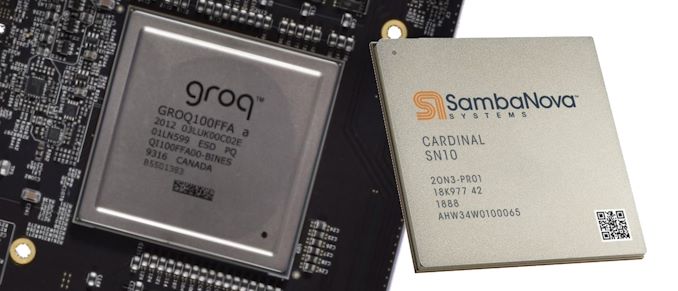


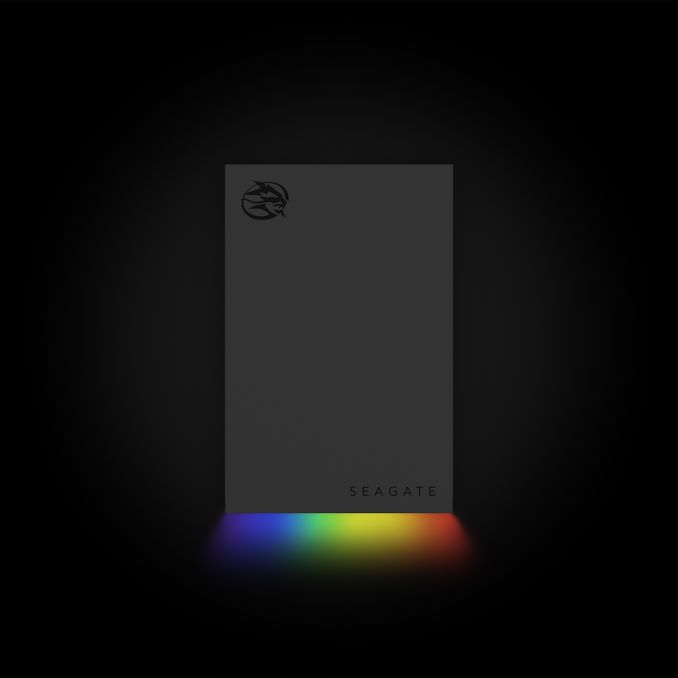

















Bookmarks